Featured Resource
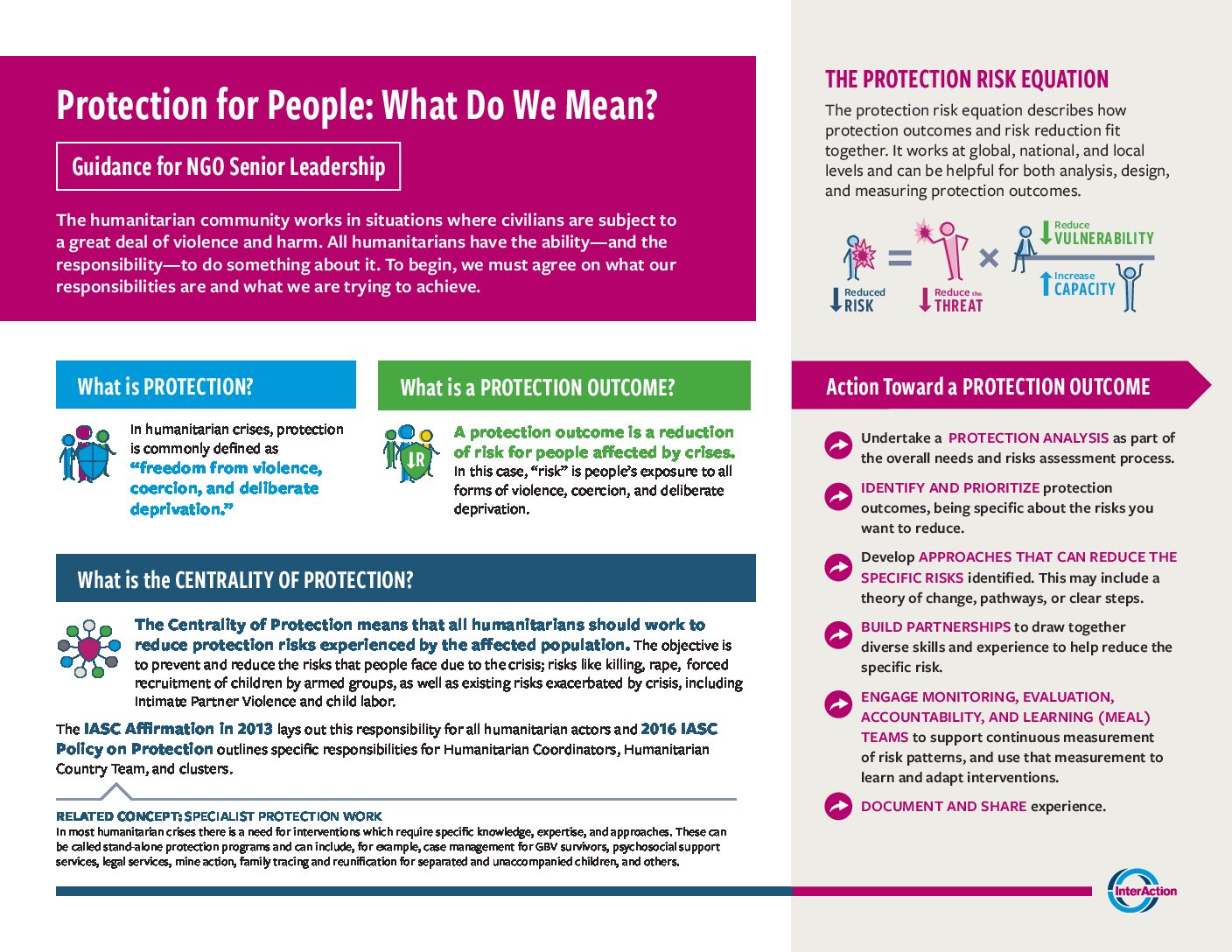 Protection for People: What Do We Mean? Guidance for Senior Leadership
Protection for People: What Do We Mean? Guidance for Senior Leadership

InterAction has published and collected resources including tools, reports, project evaluations, blogposts, and others from Members and partners that promote results-based approaches to protection since 2012; all of which can be found in this resource library. To explore practical case examples of RBP in practice, visit the case example page. Background photo By: Simon Moricz Sabjan is licensed under the CC BY-NC 4.0 license.
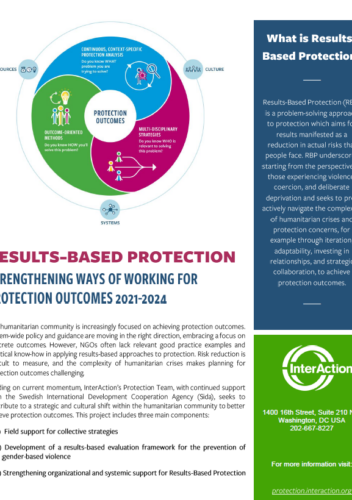
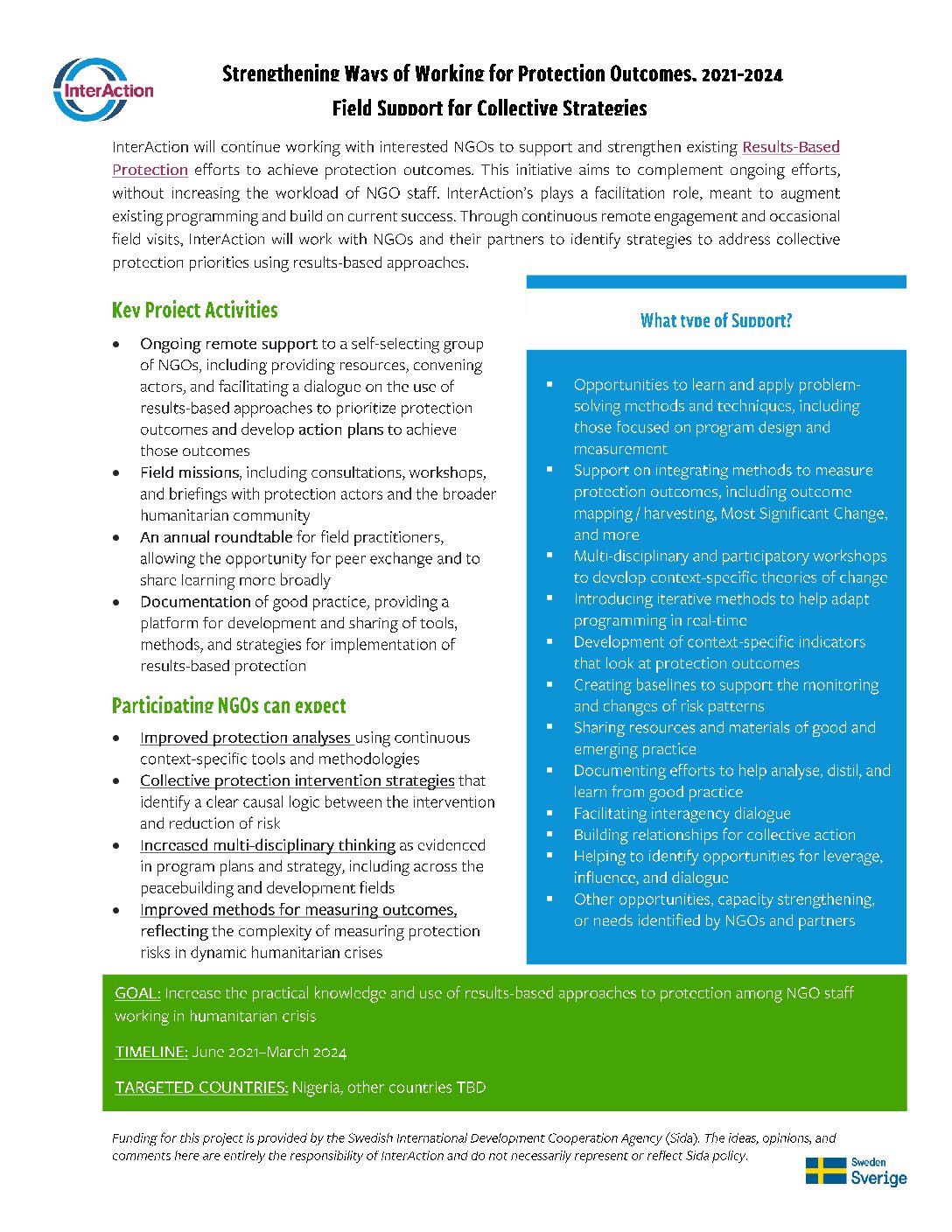
The Cash Monitoring, Evaluation, Accountability and Learning Organizational Network (CAMEALEON) carried out an analysis of the MPC program to assess how it impacted protection outcomes.
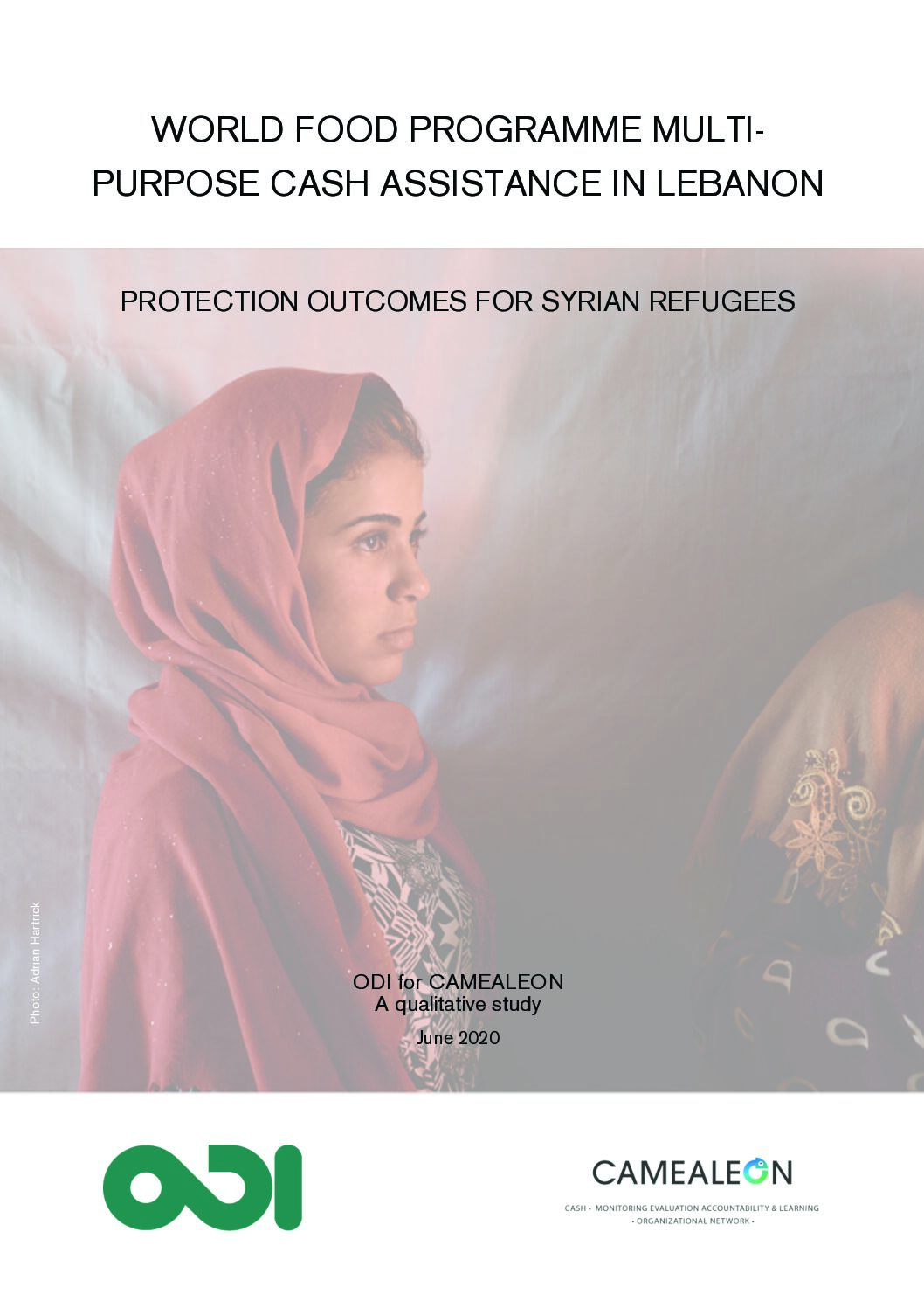
WeWorld-GVC is an international NGO that drives and implements a Community Protection Approach (CPA) to protection that embraces all three RBP Key Elements. The CPA, awarded “First Place” in InterAction’s 2020 Results-Based Protection Good Practice Contest.
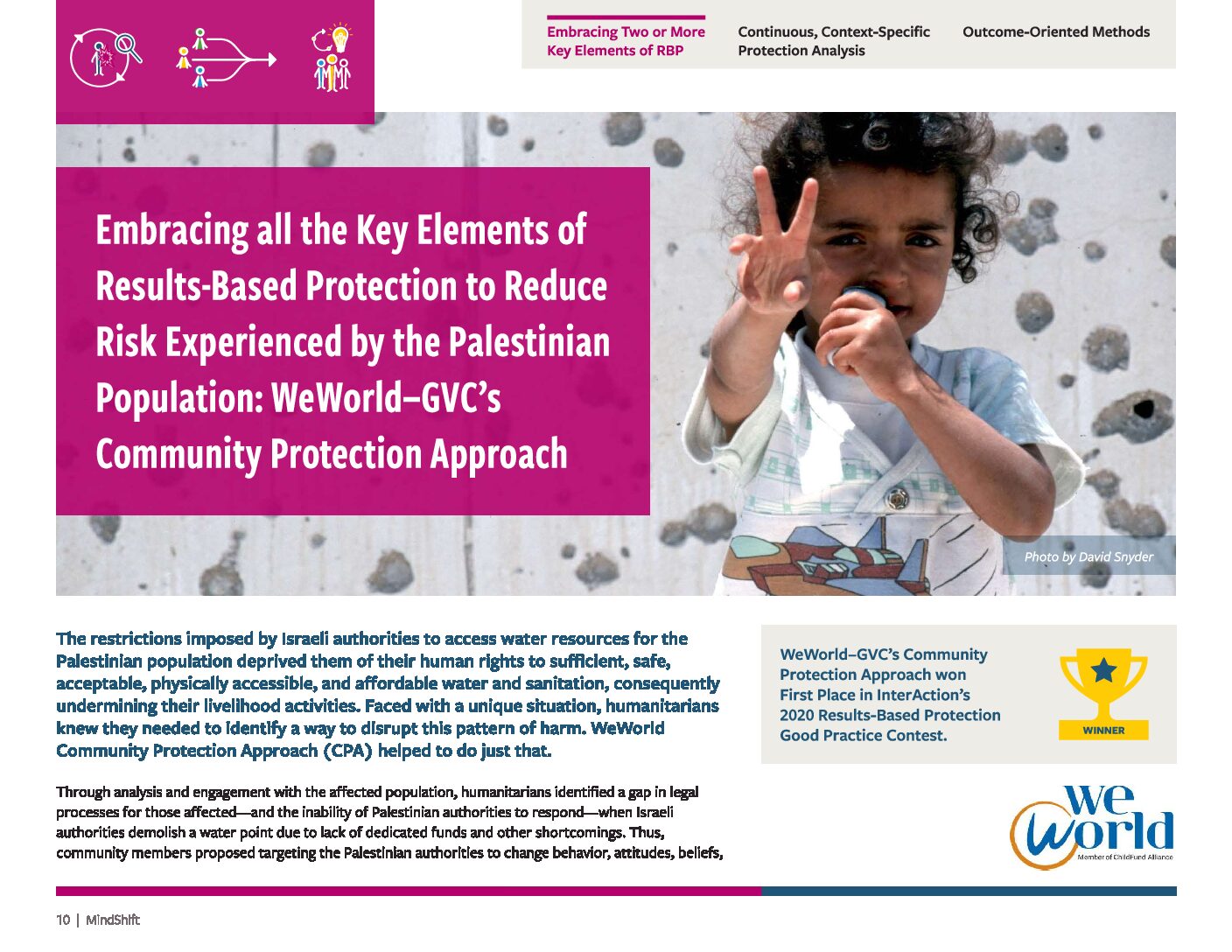
Refugee.Info is a two-way, multi-disciplinary communication platform in Italy that is used to understand the issues users are facing and to connect them with available services

The UNFPA Regional Syria Hub and the Whole of Syria GBV Are of Responsibility (AoR) set out to devise an assessment methodology to obtain GBV data to inform the Humanitarian Needs Overview (HNO) and the Humanitarian Response Plan (HRP).
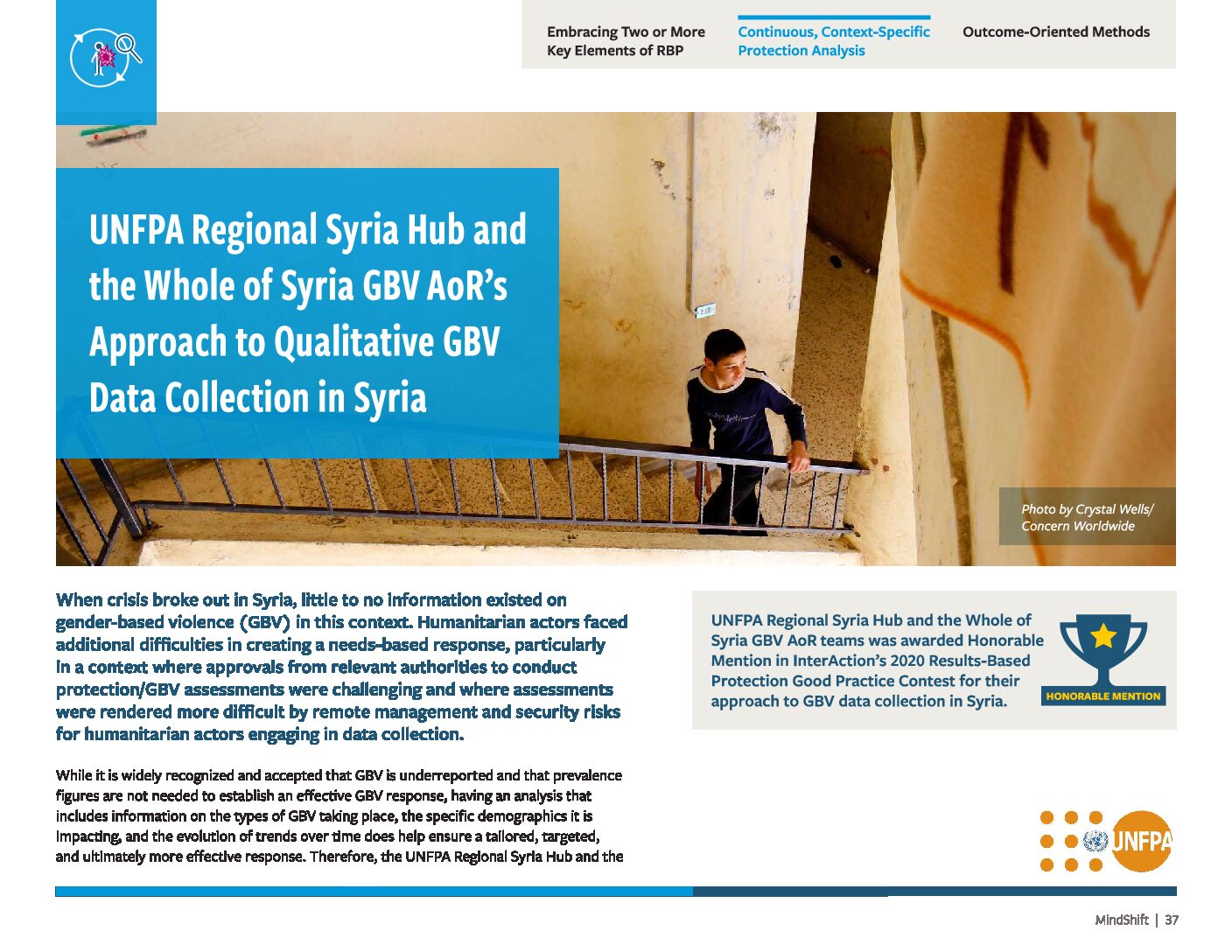
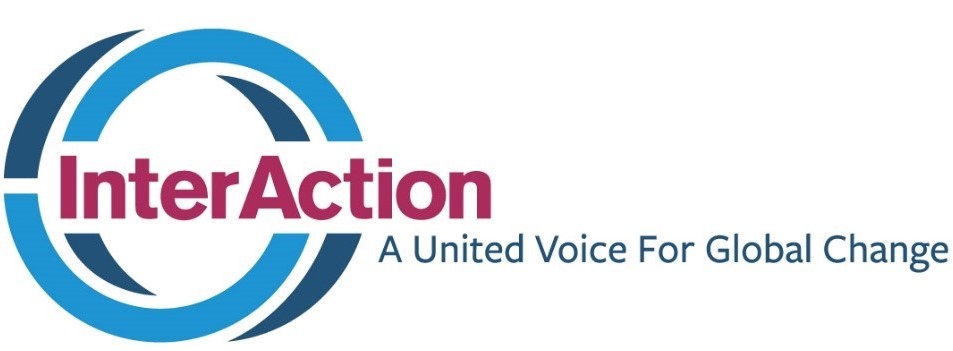
This briefing paper released in advance of the UN Refugee Agency’s (UNHCR) eighth annual High Commissioner’s Dialogue on Protection Challenges seeks to help re-think displacement in the context of today’s crises.
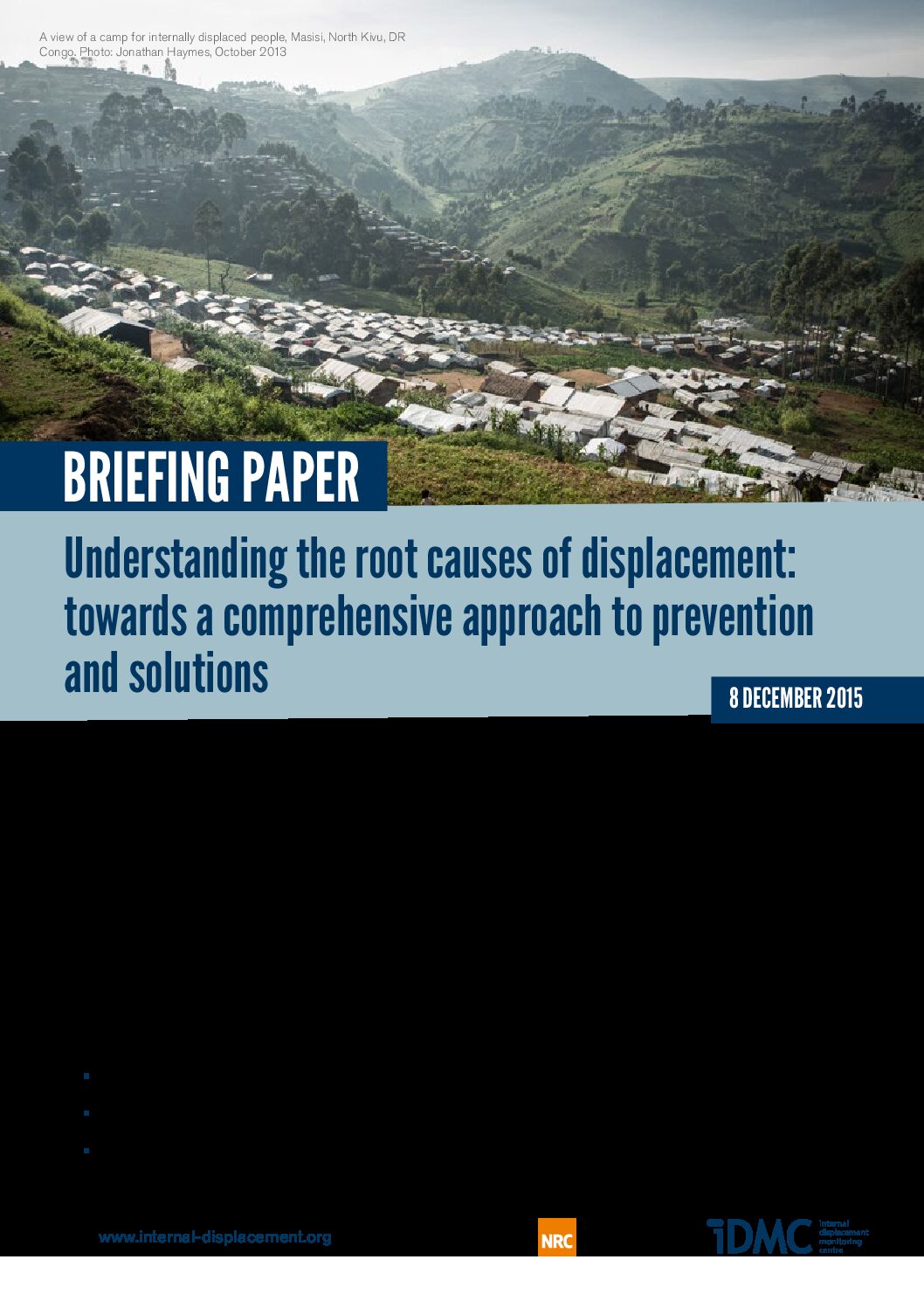
"*" indicates required fields